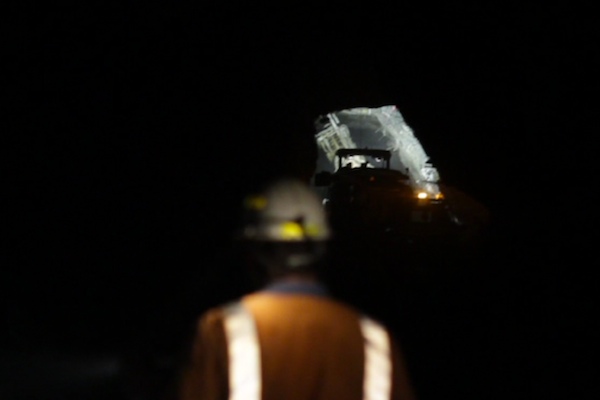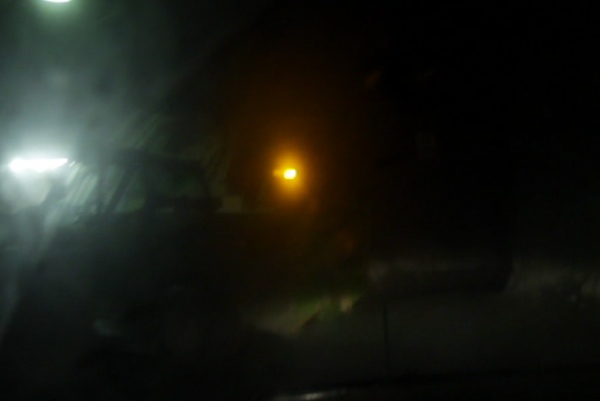NONE MORE BLACK
Glendyn Ivin
Spinal Tap fans may appreciate the title of this entry, but it's a line that seems most appropriate when trying to describe how dark it is inside a mine. I've been down a few mines in the past week and it really surprised me just how 'dark' they are. It's not a dark I've ever experienced. It's a dark that is so thick and dense and seemingly never ending. None of the access roads or mine drives are lit, and where there is a light the fact that it is surrounded by so much darkness it seems to be sucked up by the shadows and surrounding black rock walls much quicker than it would above ground. At one point while standing in a group we all momentarily turned our head lamps off at the same time. I don't think I've ever experienced that kind of blackness. You can't get 'none more black'. Your eyes will never adjust to the point where you can make out even the slightest variation in tone or definition. It's like your sense of 'sight' no longer exists.
This disorientating quality of darkness has been a recurring theme in our conversations of how we 'light' the film and how we approach the film visually and thematically as well. How do we 'show nothing'? It's a problem thats always been there for filmmakers. And I'm forever distracted with 'night scenes' where everything is lit with blue ambience and 'silver' halo cutting everyone magically from the background. If this was a film to be released in cinemas I think we could get away with sections of just blackness on screen, no light, but as this is for commercial TV we will have to have 'something' on screen that the audience can see. I think there will be many ways we can use the darkness to our advantage in creating a really immersive experience for the viewer. And as we will be shooting much of the film in studio (read: a warehouse in Footscray), we can use the darkness to 'extend' the sets we are planning to build.
Images screen grabbed from test and recce footage shot by DOP Toby Oliver.




